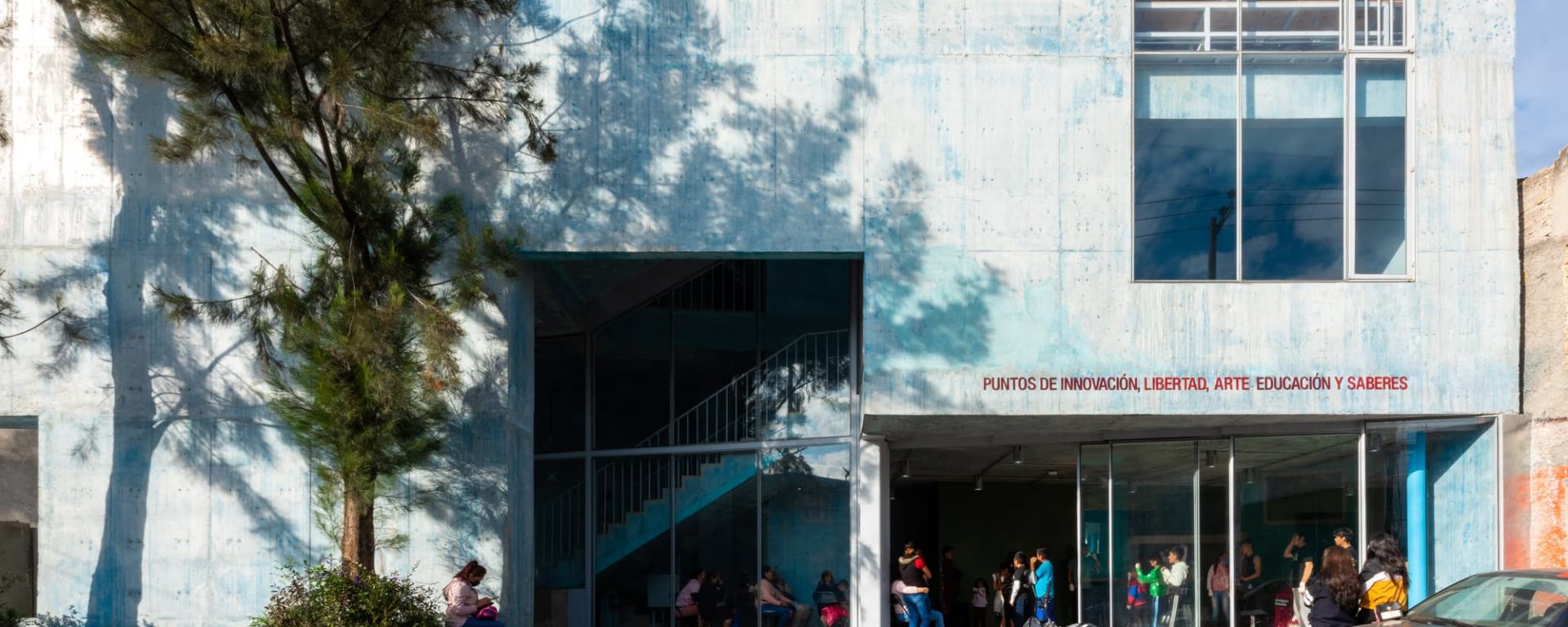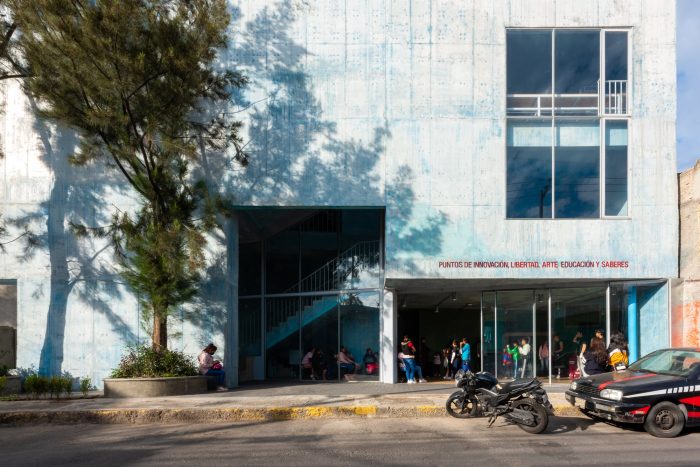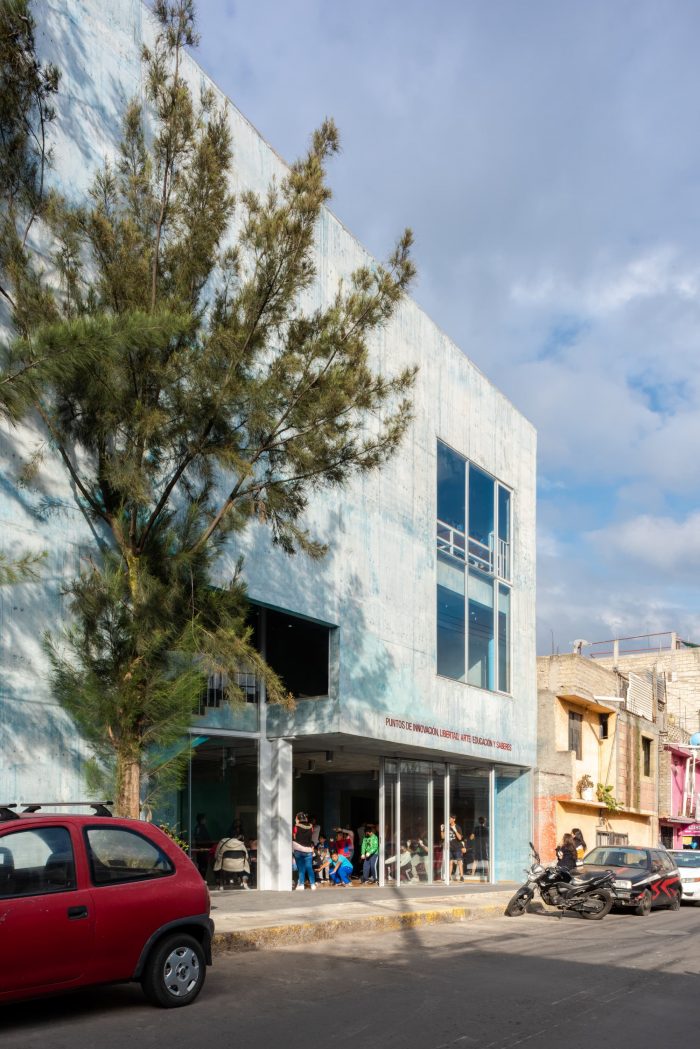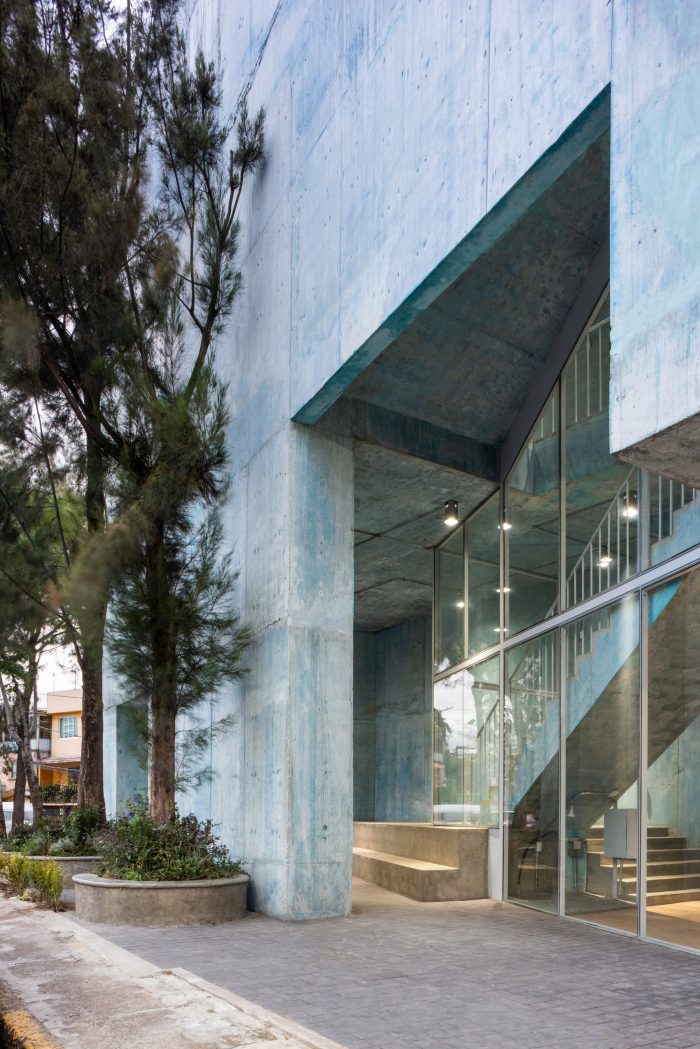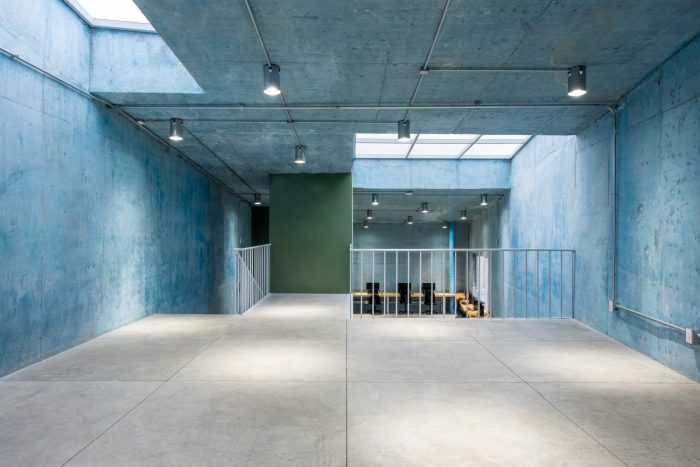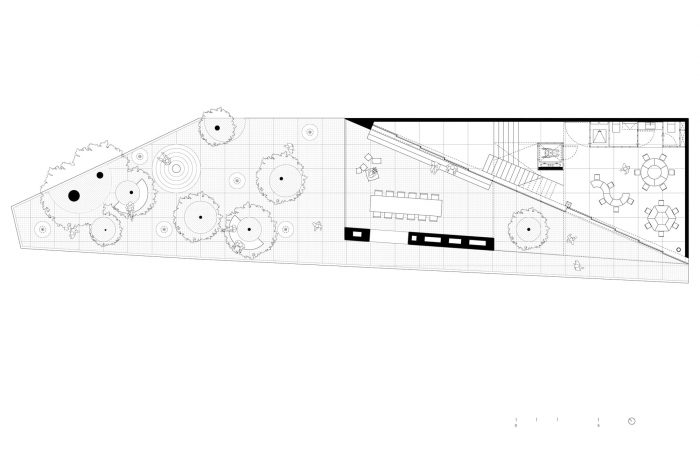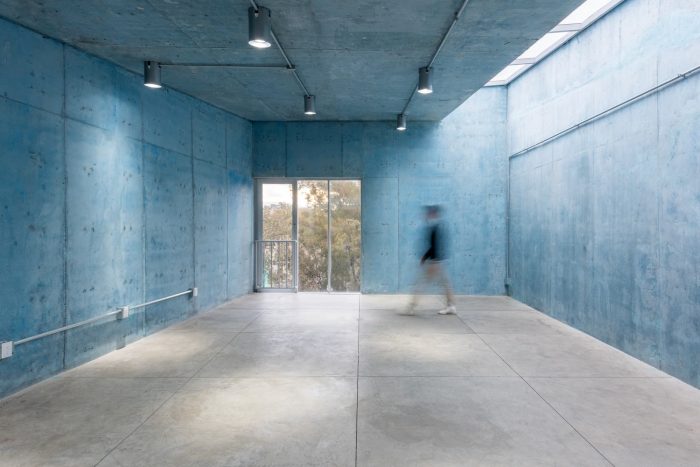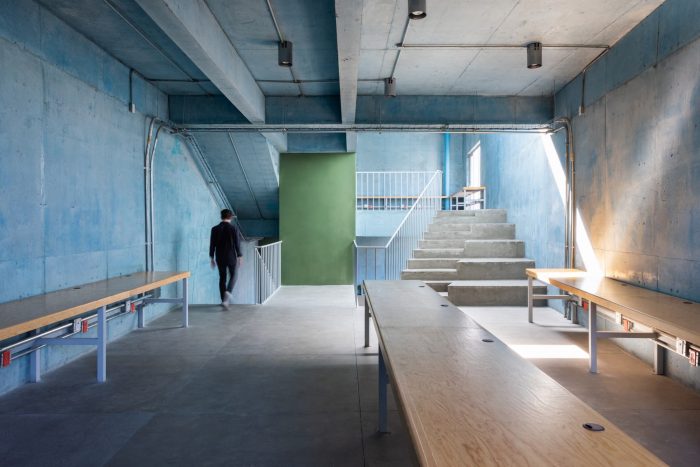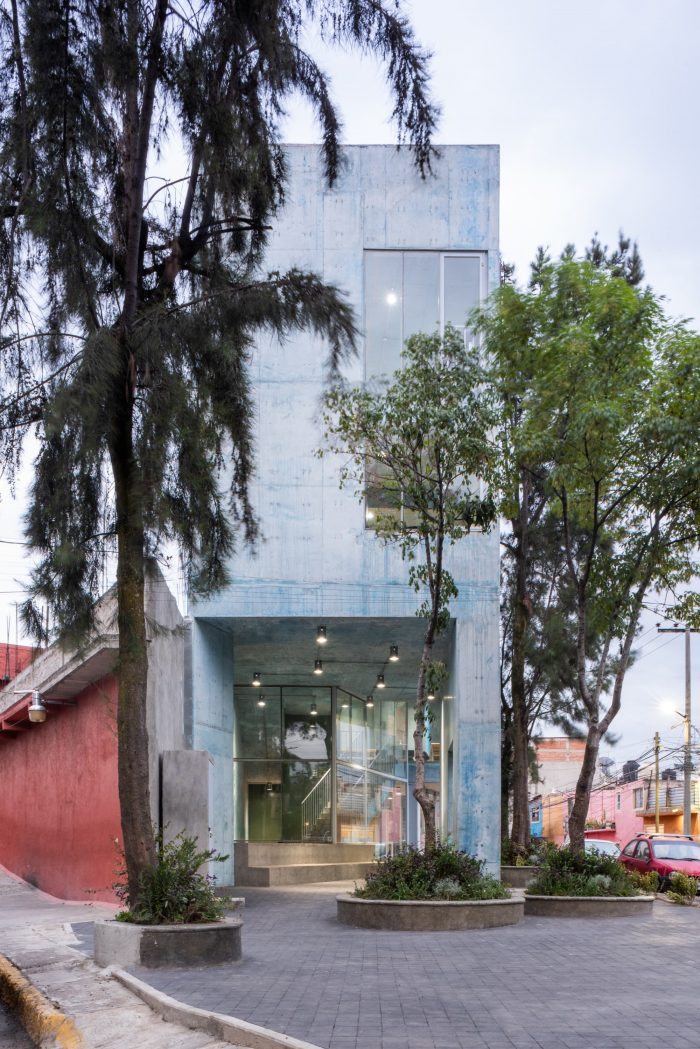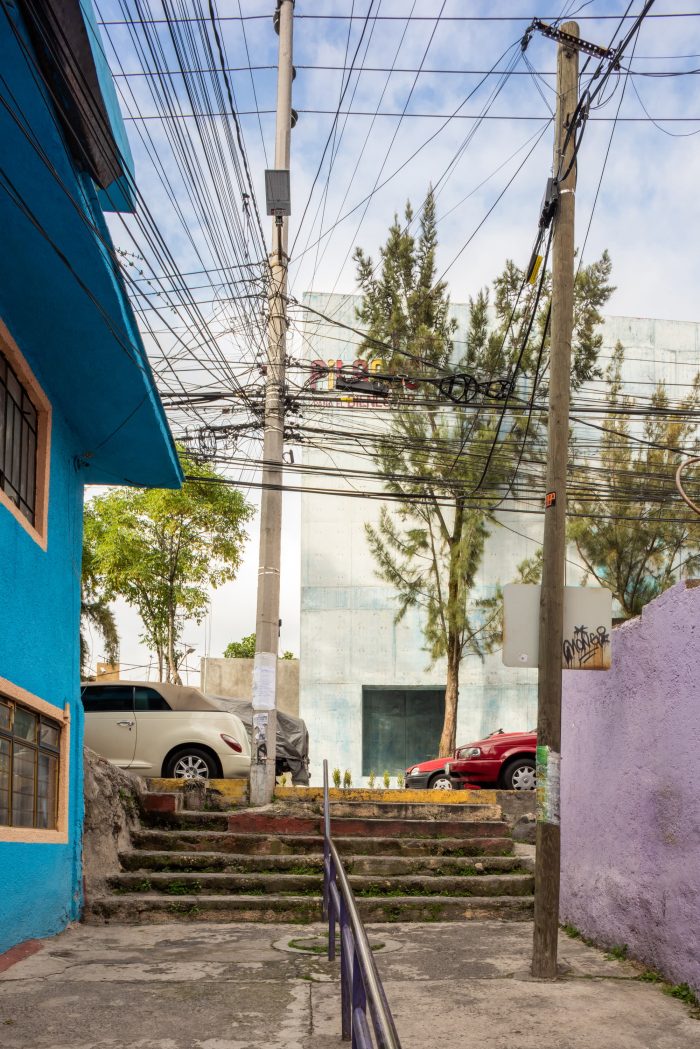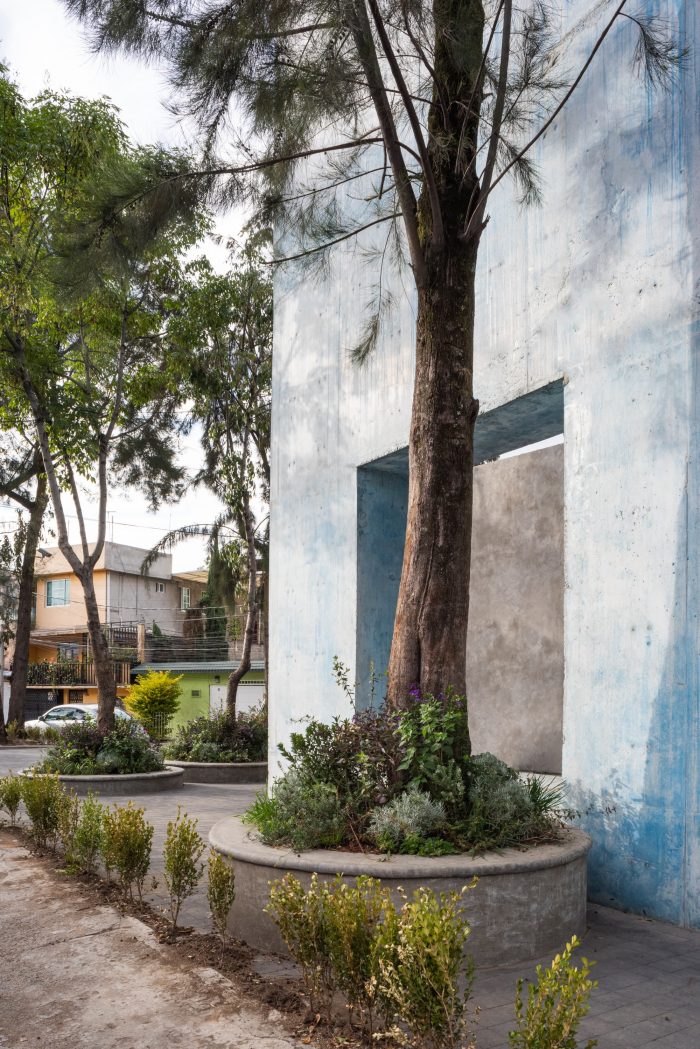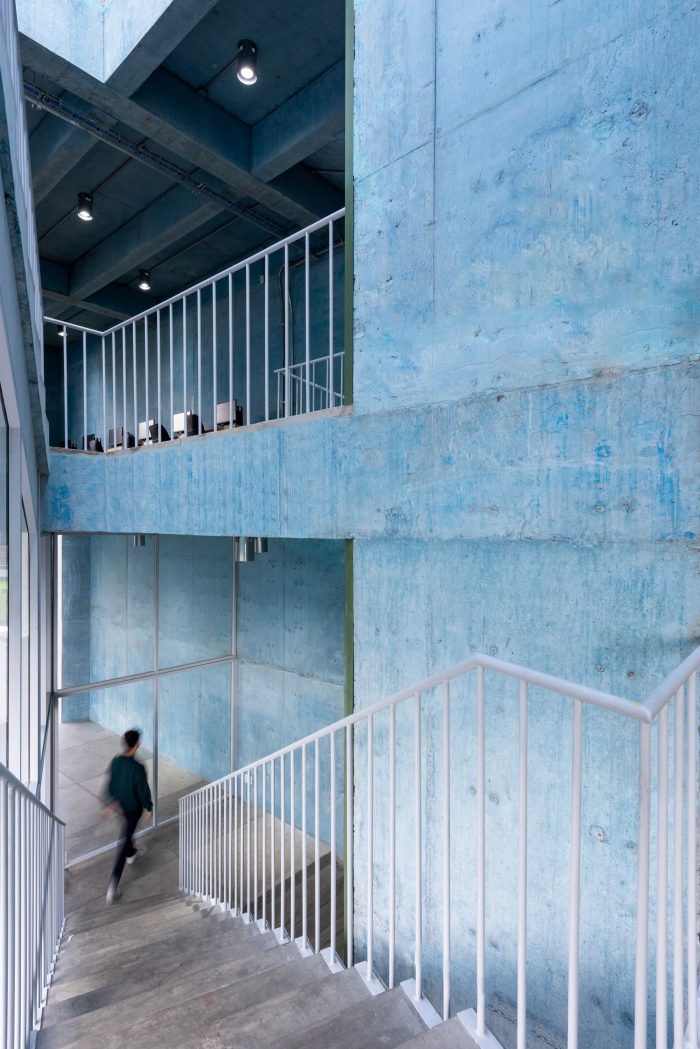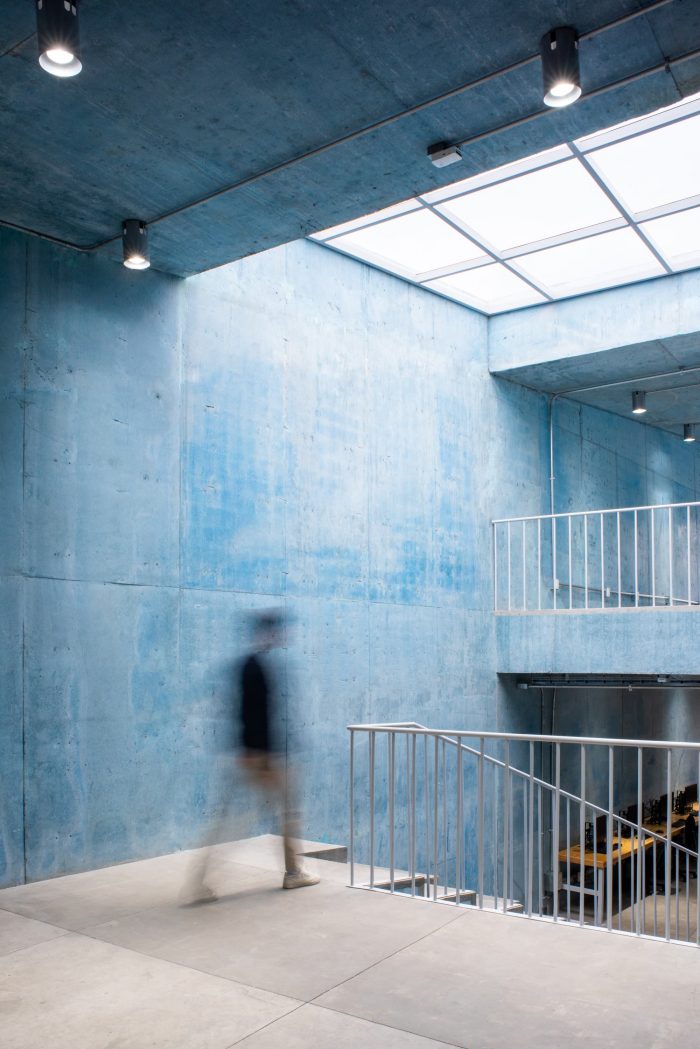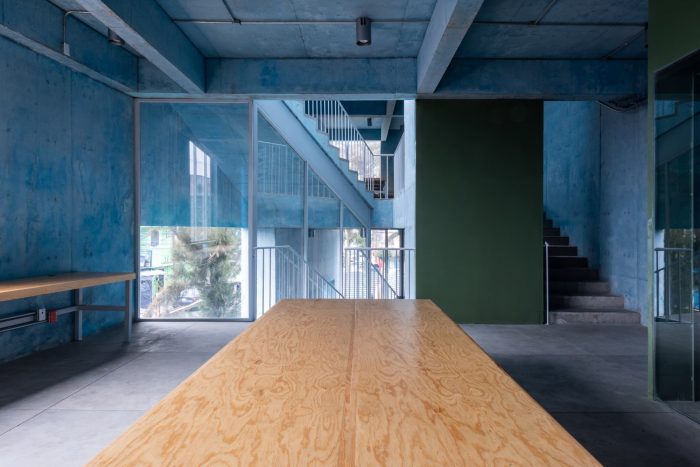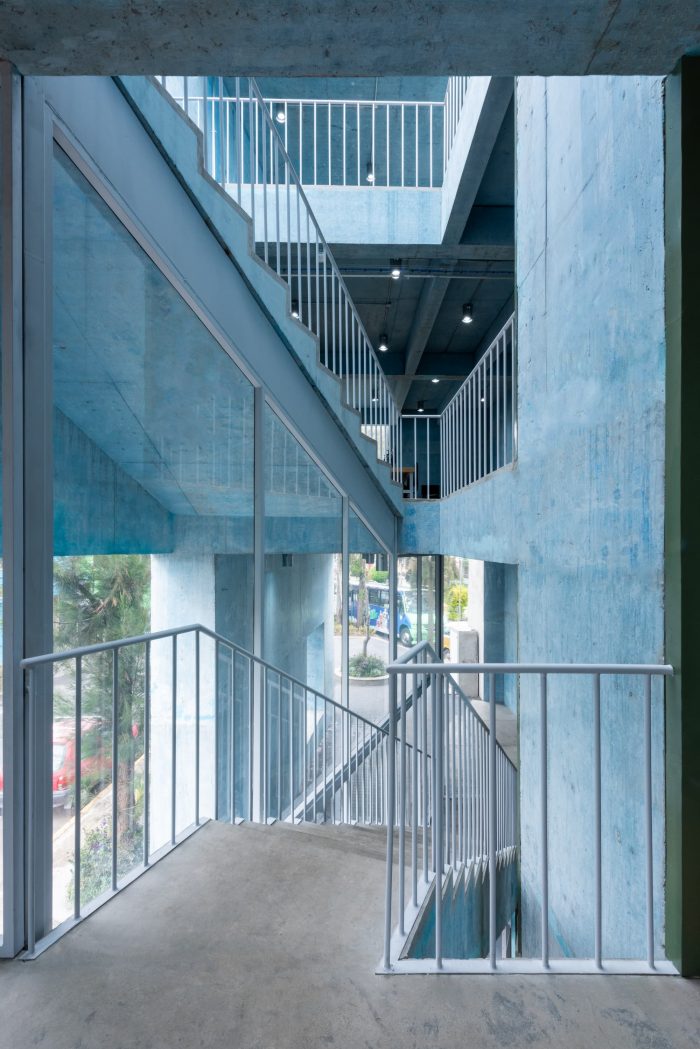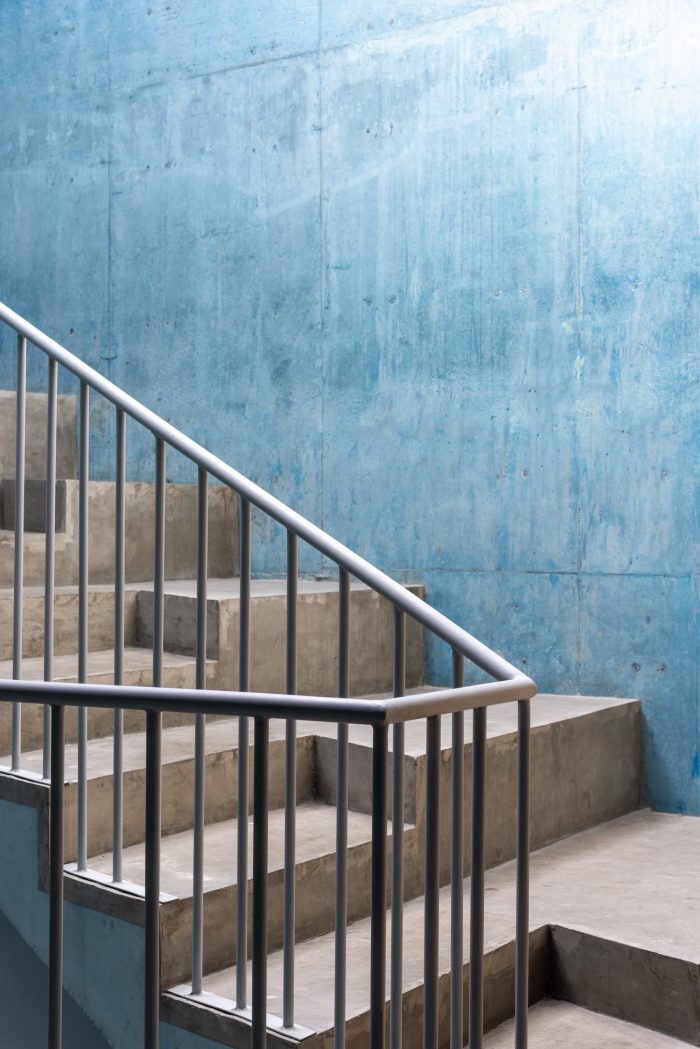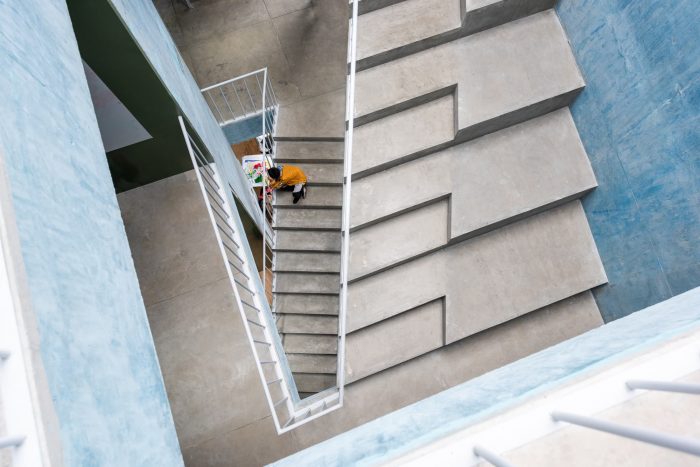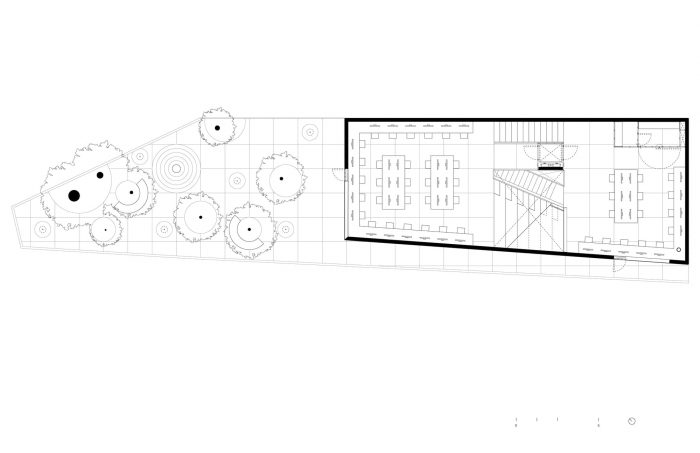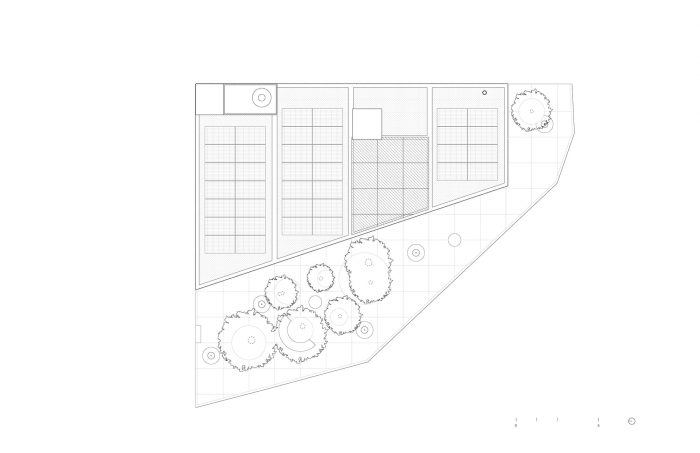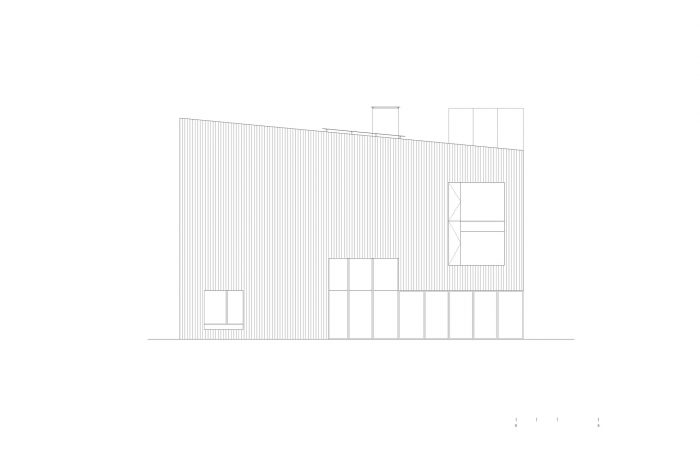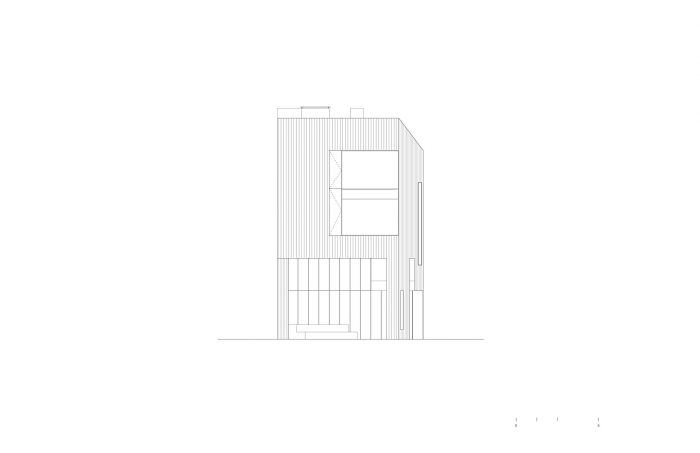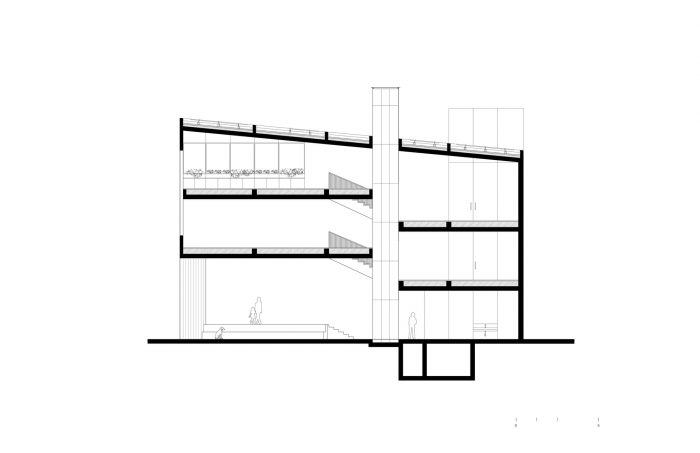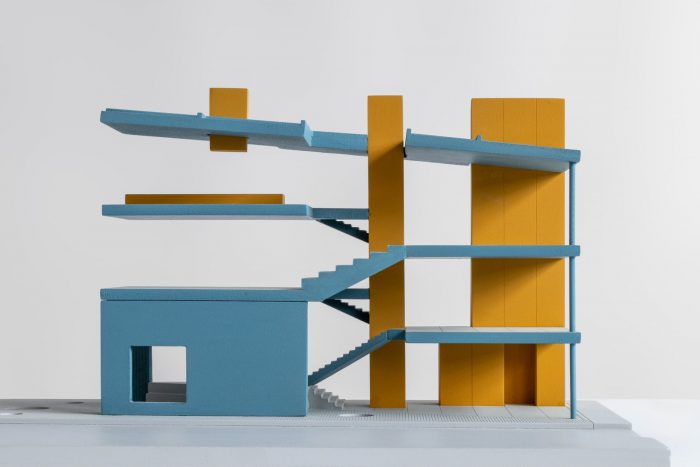为了设计墨西哥城的两个PILARES中心,WORKAC与墨西哥建筑公司Ignacio Urquiza Arquitectos合作。位于Lomas de Becerra和Azcapotzalco社区,PILARES(代表Puntos de Innovación, Libertad, Arte, Educación y Saberes或创新、自由、艺术、教育和知识中心)是一个由墨西哥城政府牵头的项目,目的是建立教育和文化空间,为城市居民的教育、技能发展、聚会和交流作出贡献。PILARES结构是一系列位于墨西哥城的战略性公共建筑,位于经历高度脆弱和贫困的地区。
For the design of two PILARES Centers in Mexico City, WORKac partnered with the Mexican architecture firm Ignacio Urquiza Arquitectos. Located in the Lomas de Becerra and Azcapotzalco neighborhoods, PILARES (which stands for Puntos de Innovación, Libertad, Arte, Educación y Saberes or Innovation, Freedom, Art, Education, and Knowledge Hubs) is a project spearheaded by Mexico City’s government in order to establish spaces for education and culture that contribute to education, skill development, gathering, and exchange among the city’s inhabitants. The PILARES structures are a series of strategically-located public buildings across Mexico City, situated in areas experiencing high levels of vulnerability and poverty.
这些以社区为导向的空间提供了为研究和学习设计的区域,以及免费的艺术、体育和娱乐活动,以及致力于支持创业、技能和职业发展的讲习班。计划包括继续教育、机器人、丝网印刷、电子、烹饪和珠宝讲习班等。
These community-oriented spaces offer areas designed for study and learning, as well as free artistic, sports, and recreational activities and workshops dedicated to supporting entrepreneurship, skills, and professional development. Programs include continuing education, robotics, screenprinting, electronics, cookery, and jewelry workshops, among others.
墨西哥城的面积约为1400平方公里,是一个多样化和复杂的领土,分为16个区。该市本身构成了墨西哥河谷都市区的一部分,该都市区有近2200万居民,其中许多人缺乏教育和文化活动的空间。PILARES建立在每个区的战略要点上,那里的贫困率很高,接受教育和接触艺术和文化的机会有限。为其建设而选择的地点在城市结构中创造了新的地标,使人们能够将其视为促进社会生活再生的社区聚会中心。
Mexico City covers an area of around 1,400 square kilometers and is a diverse and complex territory that is divided into sixteen boroughs. The city itself forms part of the Metropolitan Zone of the Valley of Mexico which has a population of almost 22 million inhabitants, many of whom lack spaces for education and cultural activities. The PILARES are established at strategic points in each of these boroughs, where poverty rates are high and access to education and exposure to arts and culture is limited. The sites selected for their construction create new landmarks in the urban fabric, enabling the population to identify them as community meeting centers that promote the regeneration of social life.
PILARES Lomas de Becerra位于墨西哥城丘陵地区的一个密集的十字路口,周围是热闹的步行街。建筑物的形状受到场地上现有树木的影响,并在转角处建立了一个公共广场。底层的对角线开口为各个方向提供了清晰自由的人行通道,邀请用户绕过广场,进入建筑。镶嵌在广场上的对角线墙起到了组织内部和外部过渡的作用。底层是开放的,内部空间以轻质玻璃立面为标志,向外开放,将广场空间向街面扩展,使其成为行人和整个社区的接触场所,并在此享受文化和社会活动。
PILARES Lomas de Becerra is located at a dense intersection in a hilly part of Mexico City, surrounded by lively pedestrian streets. The shape of the building is informed by the existing trees on the site and by the creation of a public plaza on the corner. The diagonal opening on the ground floor provides clear and free-flowing pedestrian routes in every direction, inviting users to walk around the plaza and enter the building. The diagonal walls set in the plaza serve to organize the transition between inside and outside. The ground floor is open, and the interior space is marked by a lightweight glass façade that opens outwards, expanding the plaza space towards the street level, making it accessible to pedestrians and to the whole community for use as a place of encounter and at which to enjoy cultural and social activities.
WORKAC和IUA仔细研究了该市已经运行的PILARES,以便更好地了解各个街区和社区是如何根据他们的需要调整各种中心的。通过这一点和对我们的PILARES项目的研究,通过城市与每个社区的利益相关者的密切接触,灵活性成为项目的一个关键方面。我们没有将各种项目分配到不同的空间,而是创造了一个中央楼梯,作为整个建筑的公共广场的延续,将基础设施的需求推到周边,并允许家具被无缝重组,并根据需要从一个楼层流向另一个楼层。这种灵活的方法为在建筑的生命周期内改变方案留下了可能性,并允许它自由地发展和适应。
WORKac and IUA carefully studied the city’s PILARES already in operation in order to better understand how various neighborhoods and communities have adapted the various centers to their needs. Through this and the studying of the program of our PILARES, developed through the city’s close engagement with each neighborhood’s community stakeholders, flexibility emerged as a key aspect of the project. Instead of assigning various programs to separate spaces, we created a central staircase that acts as a continuation of the public plaza throughout the entire building, pushing infrastructural needs to the perimeter and allowing furniture to be reorganized seamlessly and to flow from one floor to the next as needed. This flexible approach leaves open the possibility for changes to the program over the lifetime of the building and allows it to evolve and adapt freely.
我们从附近美丽的鲜艳色彩中获得灵感。色彩在墨西哥建筑中的使用是一个被许多艺术家和建筑师跨时代地改造和重新诠释的元素。主要材料是裸露的混凝土,其特点是外部有脊状纹理,内部则是光滑的表面。选择它是因为它的结构、结构效率、热能和美学质量。在外观上,体量简单而紧凑,具有强烈的特征,证实了其作为公共建筑的存在,同时允许底层的多孔性和上层的大开口,使其具有可访问性、吸引力,并与周围的社区和城市结构密切对话。
We took inspiration from the neighborhood’s beautiful vibrant colors. The use of color in Mexican architecture is an element that has been transformed and reinterpreted in the hands of many artists and architects across generations. The principal material is exposed concrete which features a ridged texture on the exterior and a smooth surface on the interior. It was chosen for its construction, structural efficiencies, and thermal and aesthetic qualities. In appearance, the volume is simple and compact, with a strong character that confirms its presence as a public building, while allowing porosity on the ground. floor and large openings above to render it accessible, inviting, and in close dialogue with the surrounding neighborhood and urban fabric.
Architects: IUA Ignacio Urquiza Arquitectos, WORKac
Area : 2500 ft²
Year : 2022
Photographs :Arturo Arrieta
Structural Engineering : BVG
Landscape Architecture : Genfor Landscaping
Wor Kac Principals : Amale Andraos, Dan Wood
Iua Principal : Ignacio Urquiza
Team : Michela Lostia di Santa Sofía, Eder Hernández, María del Mar Carballo, Ana Laura Ochoa, Anet Carmona, Noé García, León Chávez, Fernando Tueme, Sacha Bourgarel
City : Mexico City
Country : Mexico

